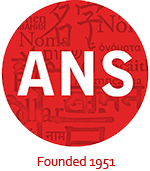
The British Columbia Geographical Names Office, operating within the Heritage Branch, is responsible for the management and administration of place naming in British Columbia. The Heritage Branch encourages and facilitates the recognition and safeguarding of BC’s cultural heritage through the development and implementation of tangible and intangible heritage policies and programs.
The Heritage Branch currently manages programs related to heritage capacity building, geographical names, historic places recognition, fossil management and the stewardship of physical heritage resources.
JOB REQUIREMENTS:
Education
Post-secondary education or training in project management, linguistics, geography or related field.
- Preference may be given to candidates with a degree in cultural geography, Indigenous Studies, GIS, historical cartography, British Columbia history, library sciences, or anthropology.
- Preference may be given to candidates with culturally-grounded education, training, or experiences within an Indigenous community or organization.
Experience
- Working with Indigenous governments and communities.
- Providing project management and coordination services for assigned projects.
- Proficient with technology and software such as all Microsoft Office tools.
- Experience communicating across diverse cultures.
- Conducting historical research and developing reference materials.
- Demonstrated experience with GIS [Oracle, ESRI], web mapping applications, Adobe Creative Suite [Acrobat, Photoshop], Corel Draw, Audacity, or similar applications.
Location: Victoria, BC V9B6X2 CA (Primary)
Salary Range: $54,933.89 – $62,318.99 annually [as of April 12, 2020]
Close Date: 4/9/2020







 Domesday Book reveals that England in 1066 was bounded by complex borderlands to the north and west and criss-crossed with a plethora of internal boundaries demarcating hundreds, shires and other districts. How did these borders and boundaries operate? How did they evolve over time from earlier borders, such as the early Mercian border demarcated by Offa’s Dyke?
Domesday Book reveals that England in 1066 was bounded by complex borderlands to the north and west and criss-crossed with a plethora of internal boundaries demarcating hundreds, shires and other districts. How did these borders and boundaries operate? How did they evolve over time from earlier borders, such as the early Mercian border demarcated by Offa’s Dyke?